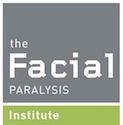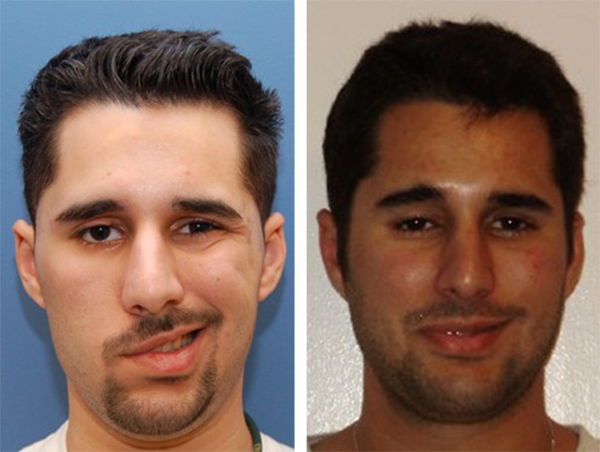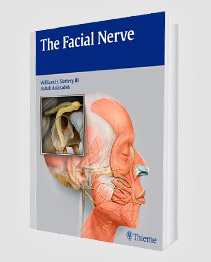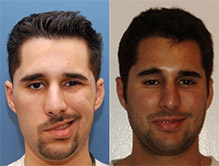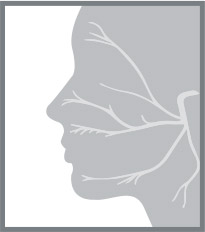Losing movement in the facial muscles can be devastating. This can make it difficult for people to smile, frown, or make other facial expressions. It can also result in anxiety, depression, and other mental health disorders.
Facial nerve palsy and Bell’s palsy are among the leading causes of facial paralysis symptoms. They occur for different reasons and can cause permanent or temporary facial paralysis.
Regardless of why facial paralysis symptoms occur, it is important to receive safe, effective treatment. By meeting with an experienced facial plastic and reconstructive surgeon like Dr. Babak Azizzadeh, facial paralysis patients can explore a wide range of treatment options.
Dr. Azizzadeh is the founder of The Facial Paralysis Institute in Beverly Hills. He aims to teach those dealing with facial paralysis about all aspects of treatment. That way, Dr. Azizzadeh ensures that his patients understand the difference between facial nerve palsy and Bell’s palsy.
Facial Nerve Palsy vs. Bell’s Palsy: Here’s What You Need to Know
Facial paralysis is a condition in which the facial muscles become paralyzed. It is generally used to describe the loss of the ability to move one side of the face.
People experience facial paralysis due to a facial nerve injury or other trauma. Facial paralysis can also occur due to infection, tumors, and other diseases.
Facial paralysis patients cannot move some or all of the muscles on the affected side of their face. This can cause a disproportionate face, along with other disabilities that make swallowing, speaking, and chewing increasingly difficult.
Bell’s palsy is the most common form of facial paralysis. It is caused by inflammation of the facial nerve likely related to reactivation of a virus known to cause cold sores (Herpes simplex virus).
Patients dealing with Bell’s palsy experience facial nerve swelling. This prevents the nerve from sending correct signals to the brain and facial muscles, resulting in paralysis.
Bell’s palsy can occur very quickly, with symptoms and paralysis setting in as soon as 48 hours after onset. People suffering from Bell’s palsy have a relatively good prognosis, with approximately 90% of patients completely recovering.
Bell’s Palsy vs. Facial Paralysis Diagnosis and Treatment
The biggest difference between facial paralysis and Bell’s palsy lies in how the conditions are diagnosed.
When a patient is diagnosed with facial paralysis, a cause for the paralysis can be identified. In this instance, facial paralysis can be linked to a tumor, infection, or nerve damage.
In cases of Bell’s palsy, the disorder appears without any reason. This can be quite troublesome, since it can be tough for a patient to determine the best course of action to alleviate their Bell’s palsy symptoms.
Facial paralysis, in most cases, tends to be more permanent than Bell’s palsy as well. The symptoms of facial paralysis won’t necessarily disappear on their own and can escalate over time. So, facial paralysis patients who forgo treatment can experience facial paralysis symptoms that last a lifetime.
Comparatively, Bell’s palsy patients may regain facial function at any time without surgical treatment. In most instances, the symptoms of Bell’s palsy subside on their own without any permanent damage. However, if Bell’s palsy symptoms linger for three months or longer, patients should seek out treatment.
Comprehensive testing is performed to determine if a patient is dealing with facial paralysis or Bell’s palsy. Lab tests are usually performed, along with a neurologic and ear, nose, and throat (ENT) evaluation.
A tearing test function, computed tomography (CT) scan, and magnetic resonance imaging (MRI) exam may be performed on patients who display facial paralysis or Bell’s palsy symptoms. These tests can be used to identify the root cause of a patient’s symptoms. And, an electromyography or electroneurography (ENoG) may be required in patients dealing with severe symptoms of facial paralysis or Bell’s palsy.
Along with the aforementioned testing, an ENT or facial nerve specialist may be required during testing for facial paralysis or Bell’s palsy. The specialist can verify that there is no other cause for facial paralysis than Bell’s palsy.
Following testing and diagnosis, a custom treatment plan is developed for a patient. High-dose steroids (prednisone) and antiviral medications (Famvir or Valtrex) may be used to treat facial paralysis or Bell’s palsy symptoms. Or, Botox injections and neuromuscular retraining may be recommended to improve facial symmetry. Patients may also require selective neurolysis surgery to correct abnormal regeneration of the facial nerve.
Learn More About Facial Paralysis and Bell’s Palsy
For those who experience facial paralysis symptoms, it’s important to understand that these symptoms are treatable. Facial paralysis and Bell’s palsy treatments can deliver amazing results when they are performed by Dr. Azizzadeh.
Dr. Azizzadeh is an expert facial paralysis surgeon in Beverly Hills who understands the proper treatments and procedures surrounding the facial nerve. If you’re struggling with facial paralysis or Bell’s palsy or would like to learn more about both disorders, please contact us online or call us today (310) 657-2203 to schedule an initial consultation with Dr. Azizzadeh.

Request your consultation with Dr. Azizzadeh today
Call us at (310) 657-2203 to schedule an appointment.
Schedule a Consultation